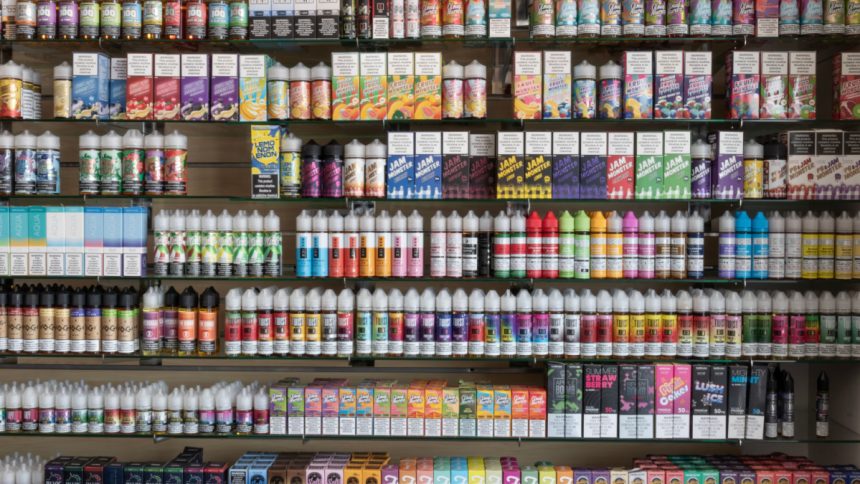New research published this week shows that vape stores are densely located around schools and in disadvantaged areas.
Lead author Dr Matthew Tuson, Research Fellow from The University of Notre Dame Australia, says that the study – commissioned by the Cancer Council Western Australia (WA) – is the first of its kind in Australia to demonstrate that ‘brick and mortar’ vape stores are more concentrated in disadvantaged communities.
It identified 194 stores in WA that sell e-cigarettes as a main source of business, mostly concentrated in Perth’s metropolitan area. Researchers found that 88 per cent of stores were located within one kilometre of a school and that vape store density was nearly seven times higher in the most socio-economically disadvantaged areas than in the least disadvantaged areas.
“We know from overseas studies that the tobacco industry often sets up shop in disadvantaged areas where they can prey on vulnerable populations, and we found the same pattern here with vape retailers,” Dr Tuson says.
“The proximity of vape stores to schools increases young people’s access to vapes and exposure to marketing, ultimately normalising e-cigarette use. While our study was conducted in WA, the density of vape retailers near schools and in disadvantaged communities is a problem we expect exists right across Australia.”
Public health experts say the data – published in the Australian and New Zealand Journal of Public Health – reinforces the urgent need for the Federal Government’s planned further regulation to protect children and vulnerable people.
Disadvantaged communities at greater risk
Co-author Professor Lisa Wood, also from The University of Notre Dame, says that the research is timely as the Australian Government prepares to further tighten vaping regulation in 2024. And with children returning to the classroom for the new 2024 school year, the journey to school will see many commute past vape stores visibly marketing their wares.
“We know that parents, teachers, and students themselves are struggling with the vaping epidemic in Australia, and these data show that vape stores are commonly located within walking distance of schools,” she says.
Tighter vaping regulation still needed
The importation of disposable vapes, which are popular with children, ended on 1 January, but further Government reforms to tighten the regulation of sale, marketing and manufacturing of e-cigarettes are planned this year.
Adjunct Professor Terry Slevin, CEO, Public Health Association of Australia, says measures to close the remaining loopholes are urgently needed to stop the epidemic of young people vaping.
“There has been a rapid explosion of vaping retailers across the country over the last few years. We strongly support the vaping reforms announced by Health Minister Mark Butler. These reforms will ensure comprehensive controls on vapes across all levels of the supply chain. They target retailers – not people who are addicted to vaping. Those addicted smokers who have decided they need vapes to help them quit, will still be able to access them with a prescription and with assistance from a health professional,” Mr Slevin says.
“We call on all state and federal Parliamentarians to side with public health professionals, schools and teachers and put the health of young people first, by supporting the full suite of proposed vaping reforms.”








